 Roosevelt Court Association
Roosevelt Court Association

History of Sunnyside Gardens
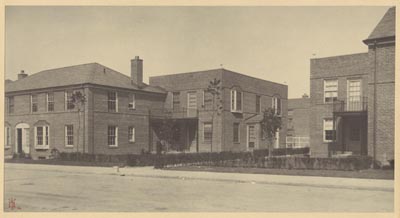 The Roosevelt Court Association of Sunnyside Gardens welcomes residents and visitors to our special neighborhood.
The Roosevelt Court Association of Sunnyside Gardens welcomes residents and visitors to our special neighborhood.
A successful community life is always the result of balance, compromise, and anticipated needs. When History, preservation, communal space, pride in home ownership, and attractive landscapes are integral parts of your neighborhood ideal there must be dedication to seeking agreement and solving problems.
The Roosevelt Court Association invites membership among residents of our part of the Gardens and elects officers to work toward a better community. Neighborhood get-togethers, snow and leaf removal, welcome baskets, newsletters, fliers, and a forum for discussions are part of its regular activities.
Sunnyside Gardens was built between 1924 and 1928 according to the ideas of the English Garden City movement. Twelve hundred dwelling units, mainly one, two, and three family brick homes were built upon a grid of twelve city blocks. While over seventy percent of land remained open space, the need to respect the grid was an urban twist to the planning process.
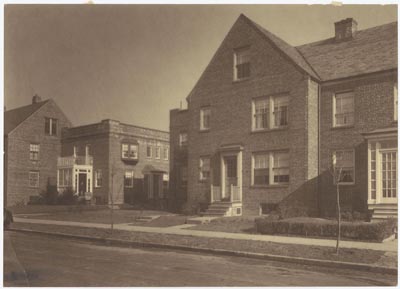 The “Garden City” concept was honored with the inclusion of common gardens or courts at the center of each block. The conservation of open land for common use in Sunnyside presented opportunities no longer available in nearby Woodside and Long Island City.
The “Garden City” concept was honored with the inclusion of common gardens or courts at the center of each block. The conservation of open land for common use in Sunnyside presented opportunities no longer available in nearby Woodside and Long Island City.
In 1923 the new Regional Planning Association of America had called for planned community development with a careful apportioning of residential and open space. Some of the RPAA’s charter members included Clarence Stein, an architect and housing official, Henry Wright, a landscape artist inspired by the design for Central Park, Alexander Bing, a wealthy real estate developer, and urban historian Lewis Mumford.
Their ideas found tangible expression in the organization of the City Housing Corporation in 1924. The CHC commissioned Stein and Wright to design a residential development on an 80 acre plot in Queens. Sunnyside Gardens was to provide affordable homes in a garden city to the middle and lower classes and the civic minded investors were to earn no more than 6% profit. A pleasant compliment of well designed low rise brick homes was to flank open spaces in the front and rear with inner courtyards. Designer Frederick Lee Ackerman’s homes varied in size configuration and relation to the street. They were to provide residents in close proximity a feeling of space, light, shade, and greenery.
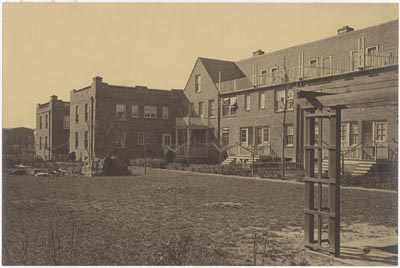 The development was close to the Queensboro Bridge, a subway line, and midtown Manhattan. An interesting mixture of blue collar workers, small business men, professionals, office workers, civil servants, artists, and writers were attracted to this new “Greenwich Village annex.”
The development was close to the Queensboro Bridge, a subway line, and midtown Manhattan. An interesting mixture of blue collar workers, small business men, professionals, office workers, civil servants, artists, and writers were attracted to this new “Greenwich Village annex.”
Entertainers Rudy Vallee, Judy Holiday, and Perry Como joined trumpeter Bix Beiderbecke, poet Florence Baker, journalist A.H. Raskin, and painter Raphael Soyer As Sunnside Gardens residents.
A three and a half acre park was reserved for recreational use. The Phipps Houses, a sister high rise planned project rose near the park. While democratic design and cooperative values were stressed, Sunnyside Gardens Houses sold for about $2,000 more than comparable units in the area. The political and social goals of the community were codified in the 1925 Declaration of Easements and Restrictions which halted the addition of fences, hedges, outbuildings, clothes lines, poles and awnings and the use of paint color variations for forty years.
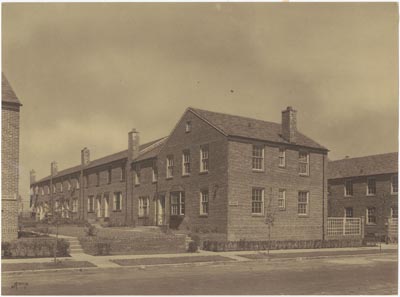 A five member board of trustees was to oversee the maintenance and use of the area. This arrangement fell apart during the Great Depression when residents staged a rent and mortgage strike. The city declared bankruptcy and many Sunnysiders lost their homes. While the private park and many of the courts fell into disrepair between 1930 and 1966, many neighborhood residents sought to maintain the traditions of the courts. By 1965, when the original easements began to expire,curb cutting for driveways and fencing became the goal of many homeowners. Housing styles began to vary. On the other hand, most walkways and curbs remained unobstructed. Feelings about preservation and property rights took on a more political and legal tone. In 1974, a new zoning resolution slowed the alteration of property but did little to reverse the previous changes. Tension grew anew over curb cuts and some newer residents cared little about gardens and architectural design. Some sought vegetable plots or play areas in the courts. By the 1980’s a counter trend gave rise to the Sunnyside Foundation which, working with the Trust For Public Land achieved a National Historic district designation for Sunnyside Gardens. More recently, the New York City Planning Commission, after surveying the area and holding public meetings, gave Sunnyside Gardens a NYC Historic District designation which involves a careful monitoring of construction and design changes.
A five member board of trustees was to oversee the maintenance and use of the area. This arrangement fell apart during the Great Depression when residents staged a rent and mortgage strike. The city declared bankruptcy and many Sunnysiders lost their homes. While the private park and many of the courts fell into disrepair between 1930 and 1966, many neighborhood residents sought to maintain the traditions of the courts. By 1965, when the original easements began to expire,curb cutting for driveways and fencing became the goal of many homeowners. Housing styles began to vary. On the other hand, most walkways and curbs remained unobstructed. Feelings about preservation and property rights took on a more political and legal tone. In 1974, a new zoning resolution slowed the alteration of property but did little to reverse the previous changes. Tension grew anew over curb cuts and some newer residents cared little about gardens and architectural design. Some sought vegetable plots or play areas in the courts. By the 1980’s a counter trend gave rise to the Sunnyside Foundation which, working with the Trust For Public Land achieved a National Historic district designation for Sunnyside Gardens. More recently, the New York City Planning Commission, after surveying the area and holding public meetings, gave Sunnyside Gardens a NYC Historic District designation which involves a careful monitoring of construction and design changes.
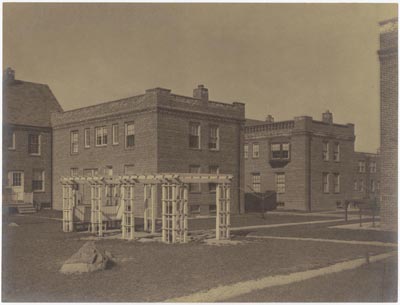 Thus, for some, Sunnyside Gardens remains a preservation mission. For others, it is a convenient, friendly and attractive place to live. The neighboring area has blossomed with ethnic and gentrified eateries and enjoyed a recent three year visit by a rebuilding MOMA. All the while the Roosevelt Court Association remained in the vanguard of both tradition and neighborly activity.
Thus, for some, Sunnyside Gardens remains a preservation mission. For others, it is a convenient, friendly and attractive place to live. The neighboring area has blossomed with ethnic and gentrified eateries and enjoyed a recent three year visit by a rebuilding MOMA. All the while the Roosevelt Court Association remained in the vanguard of both tradition and neighborly activity.
Howard R. Weiner
Historian and Sunnyside resident